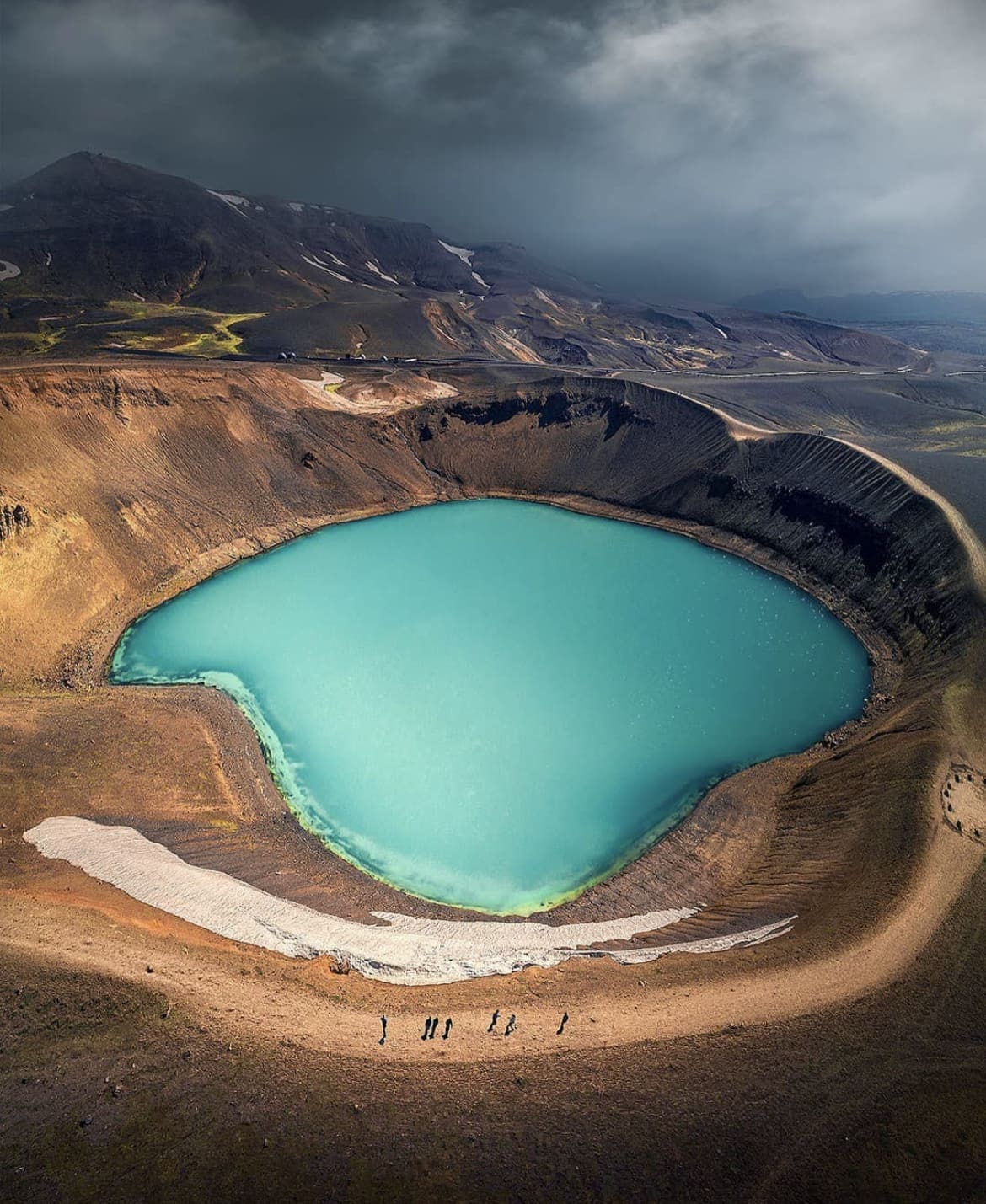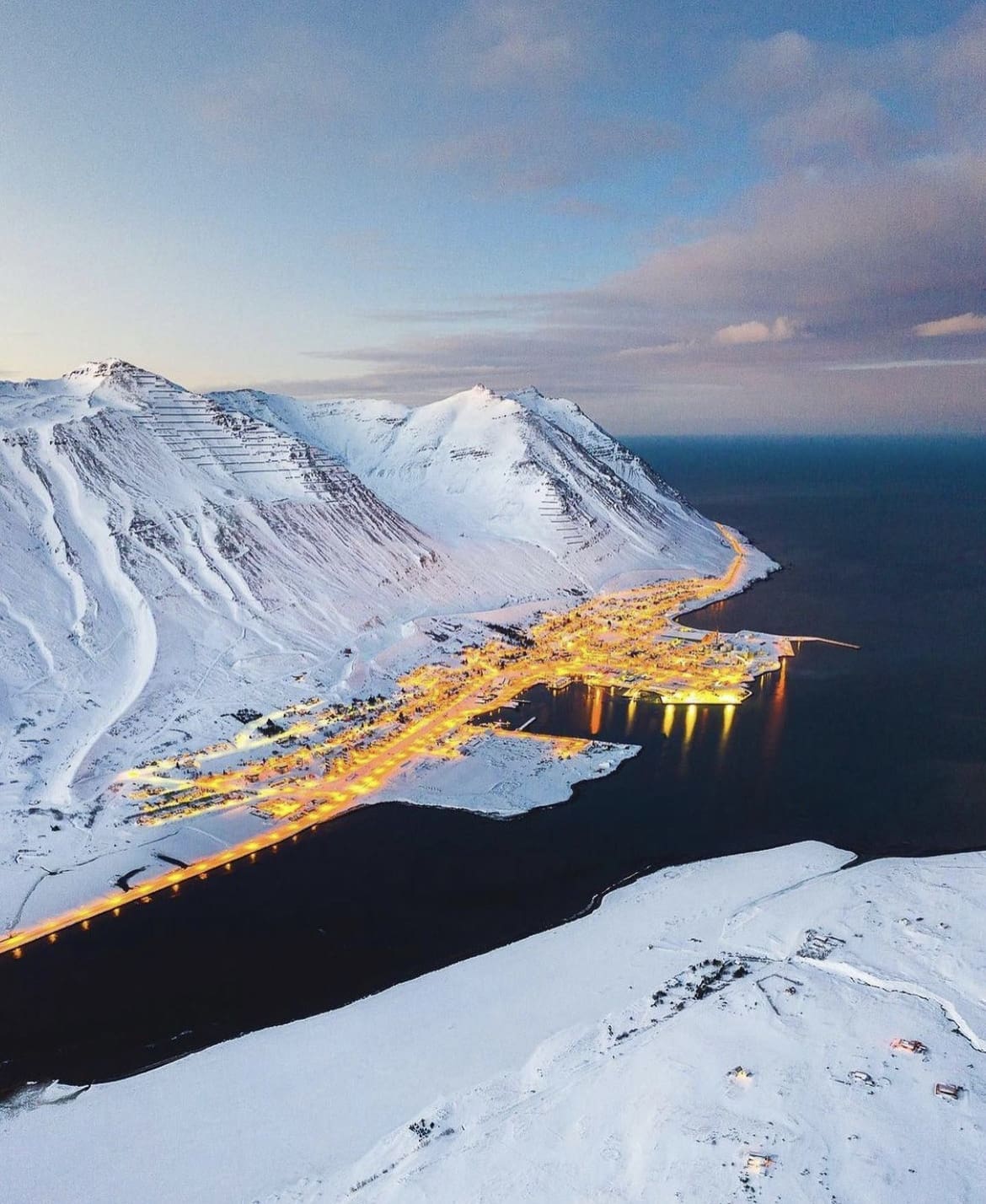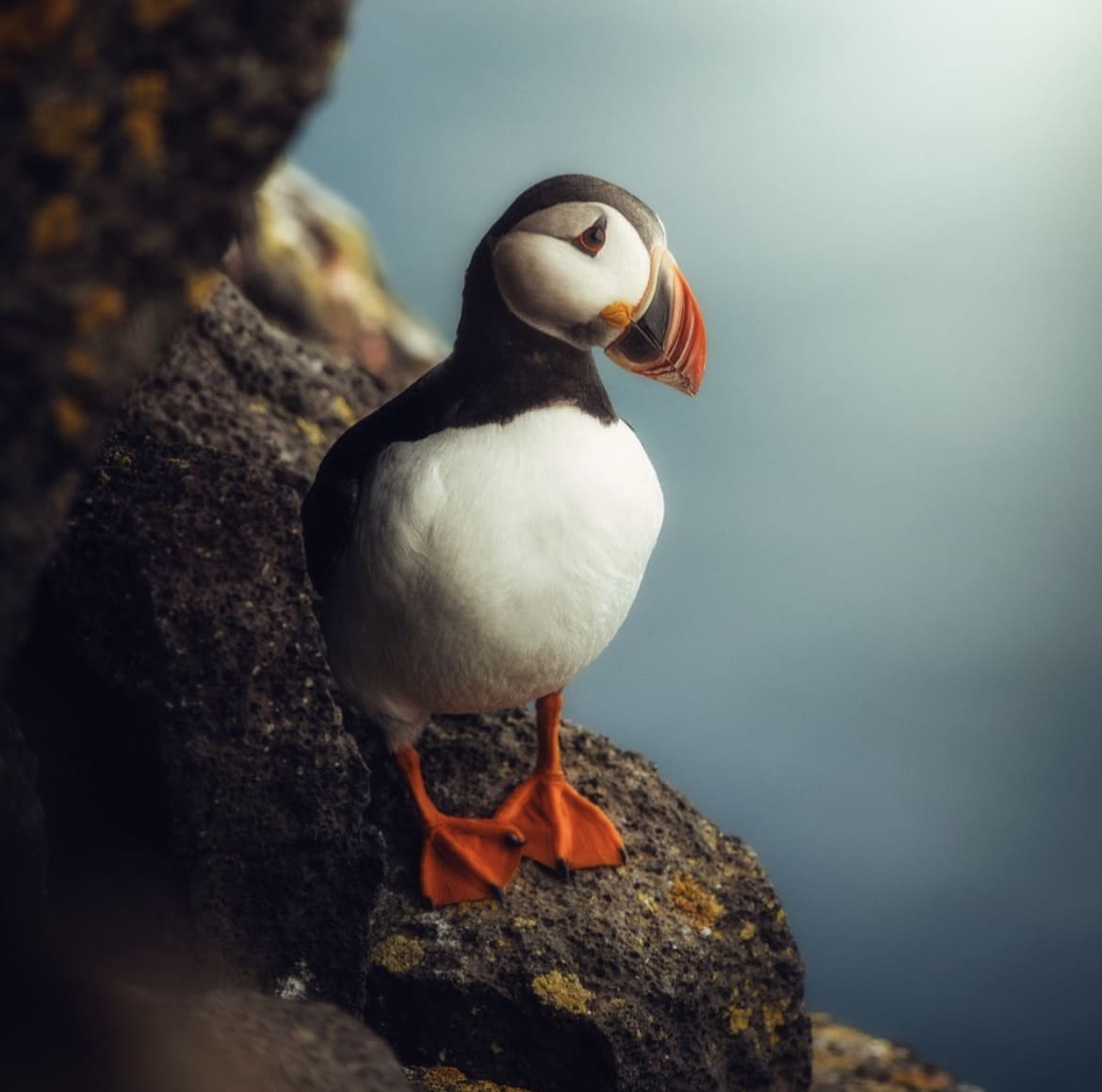[social_warfare]
20 Epic Things To Do In North Iceland
North Iceland is a realm where fire meets ice, crafting landscapes so dramatic and pure that you’ll feel like you’ve stepped onto the set of a fantasy epic. Far from the bustling streets of Reykjavik, this part of the island whispers the ancient sagas through its whispering winds and roaring waterfalls.
Here, you’ll find activities that not only dare you to explore but also challenge you to leave without falling deeply in love with the rugged wilderness. Whether you’re a culture enthusiast or an adventure seeker, North Iceland has something spectacular in store for you.
1. Dettifoss: The Power of Nature
Prepare to be humbled by the raw power of Dettifoss, reputed to be the most powerful waterfall in Europe. Here, water thunders down with such force that the mist surrounding the cascade can be seen several miles away.
For the best experience, visit early in the morning or late in the afternoon to dodge the tour buses and capture the perfect photo with the sun casting rainbows through the spray. Wear sturdy boots as the paths can be slippery and always stay within marked boundaries to keep safe while soaking in the awe-inspiring views.

2. Unwind at Mývatn Nature Baths
After a day of adventure, there’s no better way to relax than by soaking in the Mývatn Nature Baths. Less crowded than its southern counterpart, the Blue Lagoon, these baths offer tranquil waters rich in minerals, believed to soothe and rejuvenate tired muscles.
The waters maintain a blissful temperature of around 36-40°C (97-104°F), perfect for a leisurely dip against a backdrop of volcanic landscapes. Facilities are top-notch, with lockers, showers, and a café that serves up local treats. Visit during the evening to enjoy a sunset dip or, if you’re lucky, a magical Northern Lights display overhead.

3. Volcanic Adventures around Lake Mývatn
Lake Mývatn is a sanctuary for those fascinated by volcanic activity and its effects on landscapes. The area is dotted with craters, lava pillars, and fumaroles, making it a great spot for a day of exploration. Hiking around Lake Mývatn offers a firsthand view of Iceland’s dynamic earth movements, with trails suitable for all fitness levels.
Don’t miss the Skútustaðagígar Pseudo Craters, formed by gas explosions when boiling lava flowed over the wetlands. For bird enthusiasts, the lake is a thriving bird habitat, especially in summer, teeming with ducks and other migratory species. Remember to bring your camera and a pair of binoculars to capture the bizarre beauty of this geothermal wonderland.

4. Whale Watching in Húsavík
Venture to the quaint town of Húsavík, often dubbed the whale watching capital of Iceland, where the chances of spotting these majestic marine giants are as high as the surrounding snow-capped peaks. The waters here are teeming with humpback, minke, and sometimes even blue whales.
Embark on a guided boat tour to witness these creatures in their natural habitat. Most tours are led by knowledgeable guides who not only help spot whales but also provide insights into their behavior and conservation.
For an added splash of adventure, try a rib boat tour for a faster, closer, and more thrilling encounter. Remember to dress warmly and bring a waterproof camera to capture this unforgettable experience.

5. Ásbyrgi Canyon: Iceland’s Hidden Gem
Ásbyrgi Canyon is a spectacular, horseshoe-shaped depression that legends claim was formed by the hoof of Odin’s horse, Sleipnir. This canyon is a sanctuary of peace and natural beauty, featuring sheer cliff faces and dense birch woods. Hiking through Ásbyrgi offers a variety of trails ranging from easy walks to more challenging hikes that lead to expansive views from the canyon rim.
The Botnstjörn pond at the canyon’s heart is a serene spot perfect for a quiet picnic. Nearby, explore other trails that weave through the Jökulsárgljúfur part of Vatnajökull National Park, enhancing your visit with rich tales of Norse gods and natural splendor.

6. Discover Krafla’s Lava Fields
Near the Lake Mývatn area, the Krafla Volcano offers another stark reminder of Iceland’s volatile beauty. The area is marked by a series of eruptions throughout the 1970s and 1980s, which have created an otherworldly landscape of black lava fields, bright sulfur deposits, and steaming vents.
One of the most accessible and visually striking features is the Víti crater, a deep explosion crater filled with blue water that contrasts dramatically with the surrounding dark lava. Hiking around Krafla is relatively easy, but it’s essential to stick to marked paths to preserve the fragile ecosystem and ensure your safety.
The Leirhnjúkur area, where lava is still steaming hot, offers a walkable path through a moon-like terrain, making it a must-visit for anyone interested in geology and photography.

7. Step Back in Time at Glaumbær
Delve into Icelandic history at Glaumbær, a beautifully preserved farm made of turf, wood, and stone. This historical site provides a fascinating glimpse into rural life in Iceland centuries ago. The farm consists of a cluster of turf houses, which are among the few remaining examples of traditional Icelandic architecture.
The museum inside details the harsh but resourceful living conditions of Iceland’s past inhabitants. Walking through these structures, you’ll appreciate the ingenuity in using local materials to insulate and protect against the fierce Icelandic weather.
Visiting Glaumbær is not only a journey back in time but also a lesson in sustainability and adaptation.

8. Driving the Arctic Coast Way
Embark on a journey along the Arctic Coast Way, one of Iceland’s most scenic routes. Stretching over 900 kilometers, this route winds through dramatic coastal landscapes, from rugged cliffs and remote beaches to charming fishing villages.
Along the way, stop at Siglufjörður to sample locally caught herring or visit the quaint village of Húsavík for a spot of whale watching. Driving the Arctic Coast Way is about embracing the freedom of the open road, with each turn and town offering its own slice of Icelandic charm. Make sure to check your vehicle’s readiness for gravel paths, and always keep an eye on weather forecasts to avoid any unexpected challenges.

9. Goðafoss: The Waterfall of the Gods
Witness the stunning beauty of Goðafoss, an iconic waterfall steeped in history and legend. Known as the ‘Waterfall of the Gods,’ it is said to be the place where the lawspeaker Þorgeir Ljósvetningagoði threw the idols of the old Norse gods after Iceland converted to Christianity around the year 1000.
The waterfall’s impressive width and the sheer volume of water cascading over a semicircular arch make it a photographer’s dream. For the best viewing experience, explore both sides of the falls to see how the light and angle dramatically change the scene.
Nearby facilities offer refreshments and souvenirs, making this an ideal stop for a mix of cultural heritage and natural splendor.

10. Cultural Vibes in Akureyri
Dive into the cultural heart of the north by visiting Akureyri, affectionately known as Iceland’s ‘Capital of the North’. This charming town not only boasts a vibrant arts scene but also harbors the northernmost botanical garden in the world, which showcases every species of native Icelandic flora as well as an impressive collection of international plants.
Stroll through the town’s art galleries, and perhaps catch a performance at the Hof Cultural and Conference Center. For dining, Akureyri offers an array of cozy cafes and restaurants that serve up both traditional Icelandic fare and international cuisine.
Don’t miss out on visiting during one of the town’s lively cultural festivals, which truly bring the local traditions to life.

11. Chasing the Northern Lights
Chasing the Northern Lights in North Iceland is a surreal and captivating experience. The region’s latitude and minimal light pollution offer optimal conditions for viewing this spectacular natural phenomenon.
For the best chance of success, plan your visit between September and April when the nights are longest. Several local tour operators offer guided tours, which can be invaluable not only for finding the best viewing spots but also for ensuring safety and providing photography tips.
Dress warmly, be patient, and prepare for a truly mesmerizing display that dances across the Arctic sky, adding a mystical layer to the rugged Icelandic landscape.

12. Winter Sports on Tröllaskagi Peninsula
For those who crave a bit of adrenaline, the Tröllaskagi Peninsula offers some of the best winter sports opportunities in Iceland. The peninsula is renowned for its challenging ski slopes and abundant snow, making it a paradise for skiers and snowboarders alike.
The town of Dalvík, in particular, is a hotspot with its annual ski festival, which attracts enthusiasts from around the world. Beyond skiing, you can try snowmobiling across the frozen landscapes, offering another exhilarating way to explore the area’s natural beauty. Local operators provide all necessary equipment and safety briefings, ensuring a fun and safe experience for all skill levels.

13. Hofsós: The Historical Geothermal Pool
In the quaint town of Hofsós, one of the oldest settled areas in Iceland, the historical geothermal pool stands out as a must-visit. This infinity pool, designed with minimalist architecture, offers breathtaking views over the Skagafjörður bay, making it a perfect spot for relaxation and contemplation.
The pool’s warm waters are inviting, particularly on chilly days, and provide a soothing soak while you take in the stunning North Atlantic scenery. It’s a less crowded alternative to more famous spots like the Blue Lagoon, giving you a peaceful experience immersed in history and natural beauty. Facilities are well-maintained, with changing rooms and showers available for a comfortable visit.

14. Remote Beauty in Siglufjörður
Experience the remote charm of Siglufjörður, once a booming herring fishing hub. This picturesque town is nestled in a narrow fjord and surrounded by mountains, offering stunning views and a tranquil atmosphere. Visit the Herring Era Museum to learn about the town’s golden age of herring fishing, which played a crucial role in Iceland’s economic development.
The museum offers interactive exhibits, including boat rides and herring salting demonstrations. For a taste of local life, stroll along the marina, visit the small local shops, and enjoy freshly caught seafood at one of the town’s restaurants. Siglufjörður is a gem that provides a glimpse into Iceland’s past and present, wrapped in stunning natural beauty.

15. The Mystical Dimmuborgir
Venture into the eerie landscapes of Dimmuborgir, a vast area of unusually shaped lava fields and volcanic caves located east of Mývatn. Known locally as the ‘dark cities’, Dimmuborgir’s formations are the result of lava that solidified above ground, creating dramatic pillars and archways. The area is steeped in folklore, reputedly the home of trolls and elves. Walking paths of varying difficulty lead you through the striking formations, with informational signs providing insights into the geological and mythical aspects of the area. During winter, the snow-covered lava creates a particularly mystical atmosphere, making it an excellent spot for photography enthusiasts and nature lovers alike.

16. Birdwatching at Tjörnes Peninsula
The Tjörnes Peninsula is a premier destination for birdwatching enthusiasts visiting North Iceland. The peninsula is famous for its rich birdlife, especially during the breeding season, when puffins, guillemots, and other seabirds come to nest along the cliffs.
The best times for birdwatching are from late spring to early summer, when the cliffs teem with life and the sounds of nesting birds fill the air. Pack your binoculars and a good camera with a zoom lens to capture close-up shots of these beautiful creatures in their natural habitat.
Respectful observation is encouraged to avoid disturbing the birds, making this an educational and enjoyable outing for all ages.

17. Sigurgeir’s Bird Museum
Located by Lake Mývatn, Sigurgeir’s Bird Museum stands as a tribute to Iceland’s avian diversity. Founded from the personal collection of Sigurgeir Stefánsson, the museum now houses the largest private bird collection in Iceland, featuring specimens of nearly every bird species seen in the country.
The museum’s scenic location offers panoramic views of the lake, providing a perfect backdrop for learning about the local bird species and their environments. Interactive displays and knowledgeable staff enhance the visitor experience, making it a fascinating stop not only for bird lovers but for anyone interested in Icelandic nature and wildlife conservation.
18. Hiking at Hverfjall
For those who enjoy an active adventure, Hverfjall offers one of the most iconic hiking experiences in North Iceland. This massive tephra cone volcano boasts a uniquely circular shape, visible from miles around.
A hike to the rim provides breathtaking views of the surrounding Mývatn area and the opportunity to walk along the edge of a volcanic crater, a rare and exhilarating experience. The hike is relatively easy, making it accessible for most fitness levels, but always wear suitable footwear as the volcanic gravel can be loose underfoot.
Hverfjall’s dramatic landscape serves as a reminder of the powerful natural forces that have shaped Iceland’s extraordinary terrain.

19. Rauðasandur’s Dramatic Landscapes
Venture off the beaten path to Rauðasandur, a strikingly beautiful red sand beach unlike any other in Iceland. Located in the Westfjords, this expansive beach shifts from golden to orange and red hues, depending on the sunlight.
The contrast between the vivid sands and the turquoise waters makes Rauðasandur a photographer’s paradise. The area is also rich in birdlife, with frequent sightings of seals lounging along the shore. Access to Rauðasandur can be challenging due to its remote location and rough roads, so a 4×4 vehicle is recommended.
Once there, the serene and almost surreal environment provides a perfect setting for long, reflective beach walks away from the crowds.

20. Ice Caving by Katla Volcano
For a truly unique adventure, explore the ice caves near the active Katla Volcano. These natural wonders are formed by the heat of the volcano underneath the glacier, creating stunning caves of ice with beautiful formations and colors.
Guided tours are necessary for safety and to fully appreciate the geological significance of these formations. Equipped with helmets, headlamps, and crampons, you’ll venture into another world, exploring the blue-hued interiors of Iceland’s dynamic geology.
The contrast between the cold ice and the heat from the earth creates an unforgettable experience, showcasing the powerful natural forces at work in Iceland.

North Iceland offers a breathtaking array of activities that cater to all tastes, from the tranquility of geothermal pools and the majesty of cascading waterfalls to the thrill of ice caves and the cultural depth of historical towns. Each destination and activity in this guide provides a window into the soul of Iceland, combining its raw natural beauty with a rich tapestry of history and culture.
Whether you seek serene solitude, educational enrichment, or adrenaline-fueled adventures, North Iceland invites you to explore its many wonders. So pack your spirit of adventure, respect for nature, and a hearty appetite for discovery to fully embrace the unparalleled experiences awaiting in North Iceland.
Tips For Visiting North Iceland
- Traveling to North Iceland: Akureyri Airport is the main gateway, with frequent flights from Reykjavik. Car rentals are available at the airport, offering a convenient way to explore the region.
- Best Time to Visit: Summer offers midnight sun and accessible roads, while winter boasts the Northern Lights and dramatic snowy landscapes.
- Local Customs: Embrace the Icelandic respect for nature. Stick to marked trails and roads, and always check weather conditions before heading out.
By weaving together the diverse attractions and practical travel tips, this guide not only prepares you for a journey to North Iceland but also ignites a passion to delve into its enchanting landscapes and captivating stories. So, lace up your boots, charge your cameras, and get ready to explore the untamed beauty of North Iceland.
